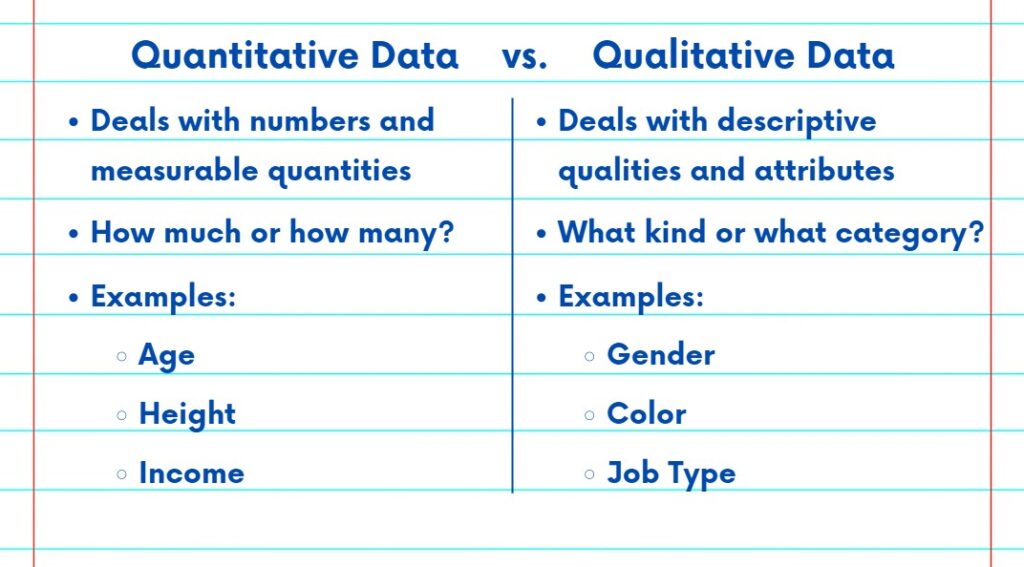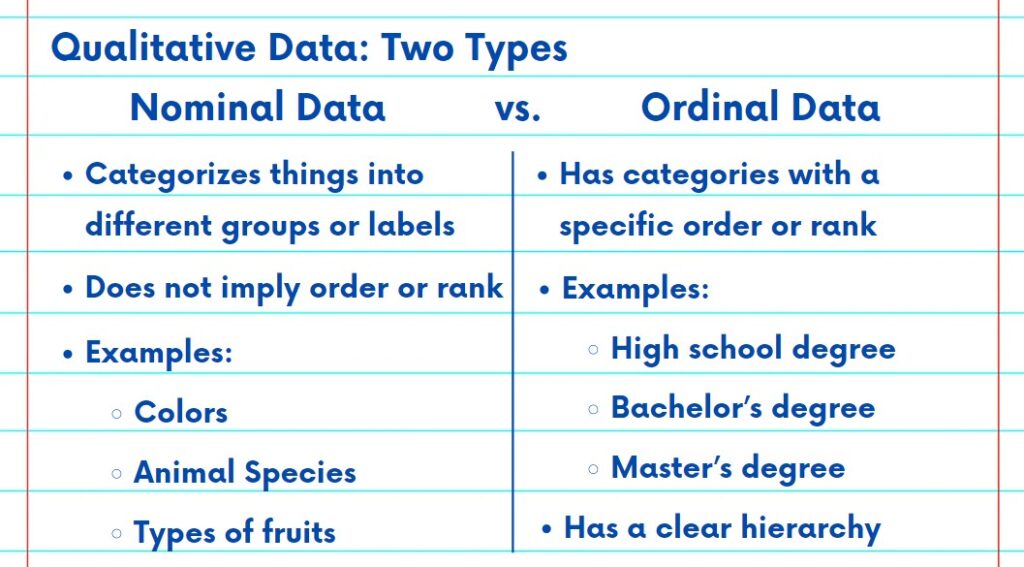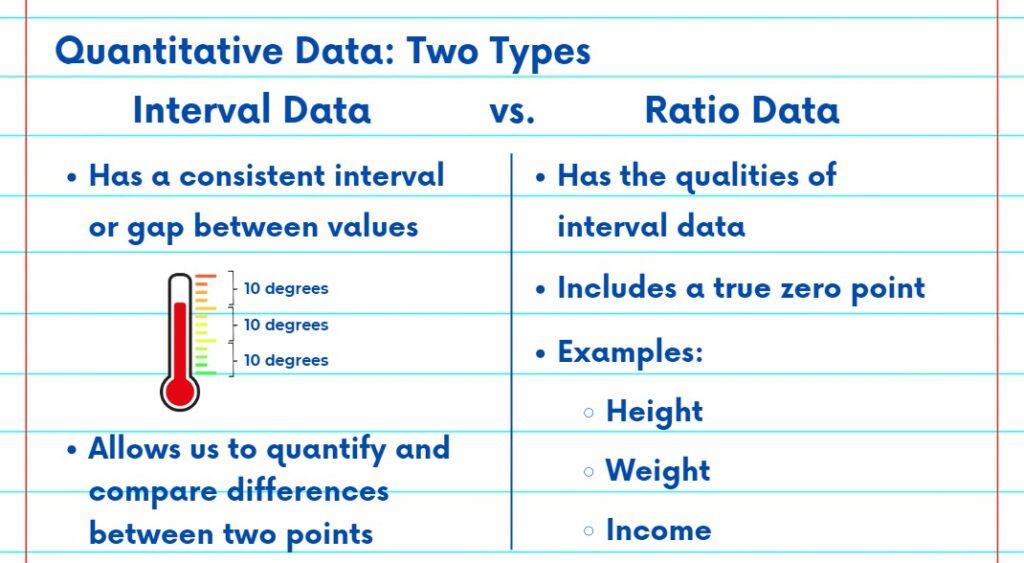This NSDC Data Science Flashcards series will teach you about the different kinds of data, including how you can use them to strengthen your research. This installment of the NSDC Data Science Flashcards series was created by Varalika Mahajan. Recordings were done by Sneha Dahiya. You can find these videos on the NEBDHub Youtube channel.
We’re going to dive into the fascinating world of data and its various types. Understanding what types of data are out there is crucial for anyone working with data, whether you’re a scientist, a student, or just curious about the world around us.

Let’s start with a fundamental distinction: quantitative vs. qualitative data. Quantitative data deals with numbers and measurable quantities. It’s all about ‘how much’ or ‘how many.’ Think of things like age, height, or income.
On the other hand, qualitative data is descriptive. It deals with qualities and attributes rather than numbers. It answers ‘what kind’ or ‘what category.’ Examples include gender, color, or job type.

Now, let’s delve deeper into qualitative data. We have two subcategories: nominal and ordinal.
Nominal data simply categorizes things into different groups or labels. It doesn’t imply any order or ranking. Think of colors, animal species, or types of fruit.
In contrast, ordinal data has categories with a specific order or ranking. For example, education levels like ‘high school,’ ‘bachelor’s,’ and ‘master’s’ – these have a clear hierarchy.

Interval data not only measures ‘how much’ but also has a consistent interval or gap between values. The temperature in Celsius is an example. For example: 20-30°C, 30-40°C,40-50°C. The difference between 20°C and 30°C is the same as between 30°C and 40°C.” Interval data is useful for measuring data like temperature because it allows us to quantify and compare differences in temperature between two points on the scale.
Lastly, ratio data is the most advanced. It has all the qualities of interval data but also includes a true zero point. Think of variables like height, weight, or income, all of which can be zero. A value of ‘zero’ in these cases means the complete absence of the attribute. However, temperature in Celsius is not on an interval scale because zero is not the lowest possible temperature.

So there you have it, the fascinating world of data types – quantitative vs. qualitative, nominal & ordinal, and interval & ratio. Understanding these distinctions is vital for making sense of the data and making informed decisions. We will be discussing each of these in more depth in our upcoming videos.
Please follow along with the rest of the NSDC Data Science Flashcard series to learn more about data science ethics.
